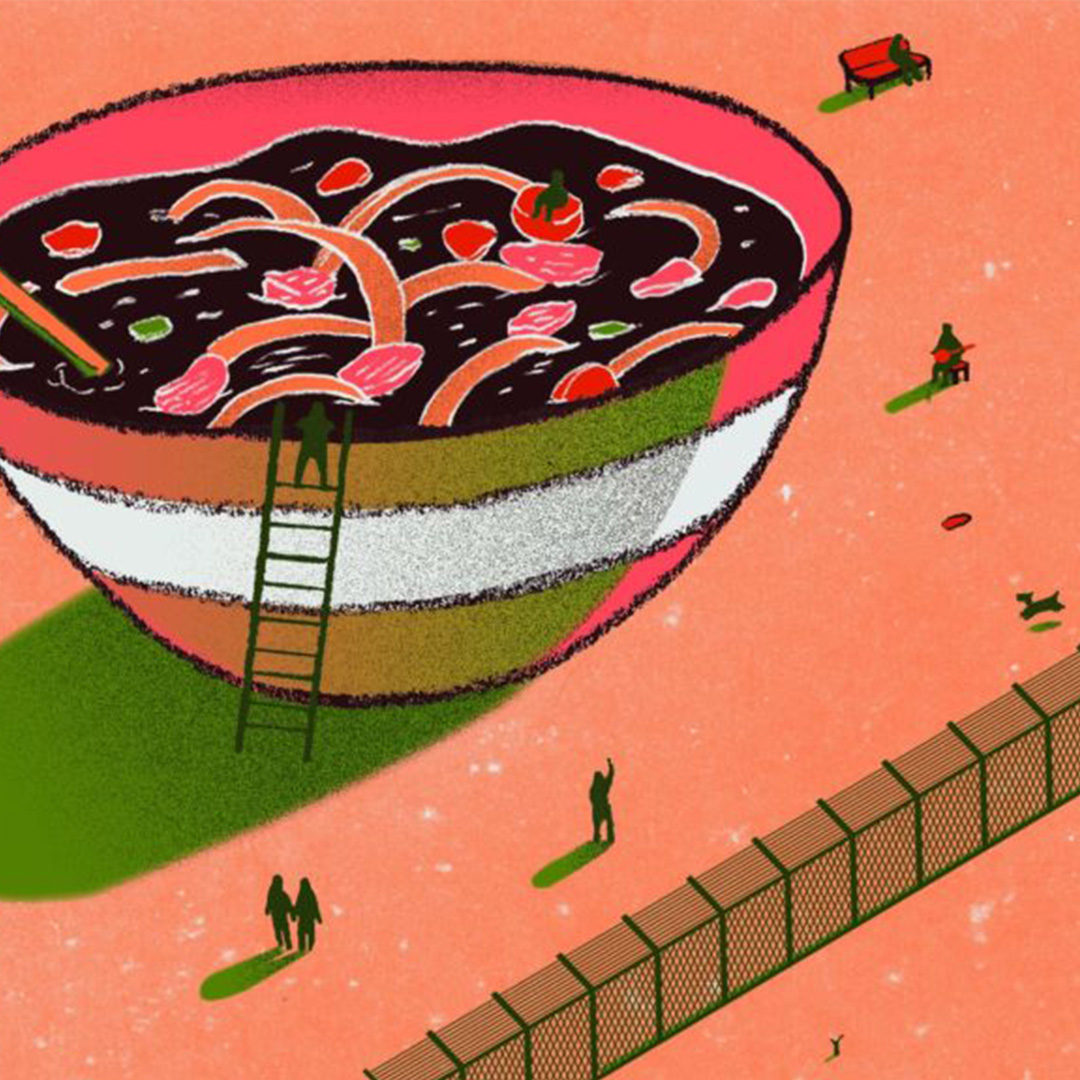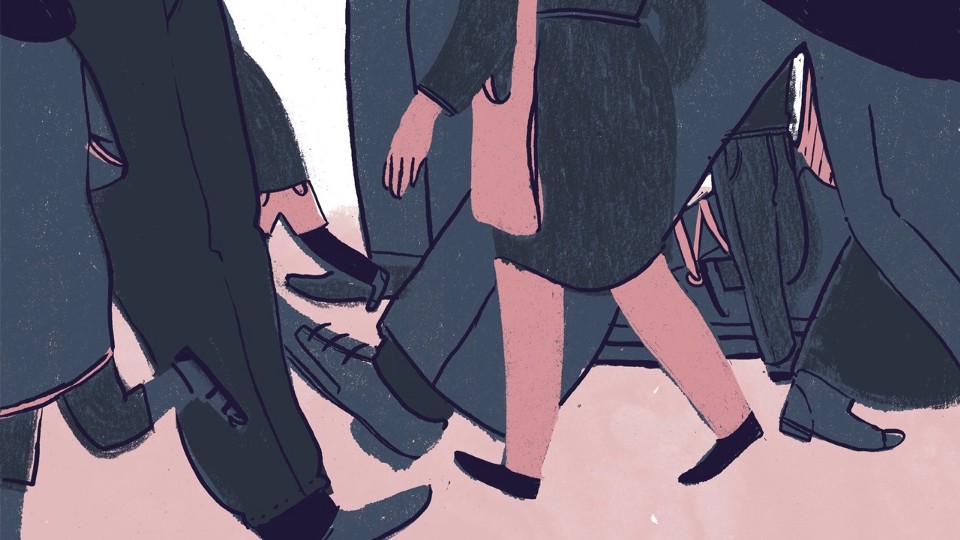

As a child in Barranquilla, a northern port city in Colombia, Elka Aranzalez grew up around people and food. Her father, a criminal lawyer, had eight siblings, and there were enough soccer players in her extended family to field two teams in the local amateur league. Meals were lively, extravagant events. Aranzalez’s favourite dish was bocachico, a river fish that could be fried whole or stuffed with vegetables and grilled until tender.
Every summer, crowds of people — relatives, as well as clients and employees of her father’s firm — would descend on the family cottage, located a few kilometres from town on the Caribbean Sea. The guests would spend their afternoons swimming or visiting the nearby beachside amusement park. Then they’d file into the house, refreshed and sunburned, to eat fried plantains and sancocho, a meaty stew, and knock back glasses of Chivas Regal.
While the family cook handled meal preparation, Aranzalez was in charge of hospitality. When she was a teenager, it was her job to shepherd guests into the dining room, manage the kitchen, and ensure food was properly timed. “My father would say, ‘You need to talk directly. You need to talk with power,’” she recalls. “It was training I would never get at university.”
While Aranzalez fondly recalls those summertime events, there are other life experiences she prefers not to revisit. She will not divulge, for instance, the reasons why, in 2002, three years after receiving her law degree from the Universidad Libre in Barranquilla, she left Colombia to seek refugee status in Canada. She also hesitates to talk about the man she married in 2003 and divorced in 2007, except to note that he was a skilled cook. “It was one of the reasons I fell in love,” she says.
She does, however, reflect on how moving to Canada changed her relationship to food and community. The food culture seemed both rich and impoverished. She recalls being awed by the range of products at the grocery stores — “There were varieties of fruits and vegetables I had never seen before,” she says — but at other times, her experiences were disappointing: fruit was less flavourful and yogurt more watery than what she’d eaten back home. In 2006, she experienced a phenomenon that is surprisingly common in this country: hunger.
The technical term for what Aranzalez went through is “food insecurity,” a problem that affects one in eight Canadian households and ranges in intensity from marginal to severe. A marginally food-insecure person will worry about not being able to put food on the table; a severely food-insecure person will economize by skipping meals. In Toronto, 12.6 percent of households experience food insecurity, a number that is roughly on par with the provincial average. Children, however, are particularly vulnerable: 17 percent of Ontarians below age 18 live in food-insecure homes.
From September 2006 to August 2007, a time in which Aranzalez was severely food insecure, she was separated from her husband and raising her three-year-old daughter, Juliana, in an apartment near Lawrence Avenue and Allen Road. She visited her local food bank, which gave her bi-monthly emergency supplies and prevented her from starving. That’s about all it did, though. The experience was joyless and lonely. “Beside the lack of food,” she says, “there was something else I was missing: culture.”
For a phenomenon that is older than the country itself, food insecurity is surprisingly misunderstood. It is both simpler and more complicated than it’s made out to be. Although the problem connects to many others — people who experience food insecurity often contend with housing, employment, and health challenges too — it appears to have only one significant root cause.
In the past, researchers have sought multifactorial explanations. Perhaps skills training is an issue? People may be inadequately nourished because they don’t know how to prepare nutritious meals. And yet, according to a 2017 study from the Canadian Journal of Public Health, people who are food insecure are just as competent in the kitchen as anybody else.
Another common theory posits that food insecurity is a function of urban geography: some Toronto neighbourhoods have a rich variety of food-retail options, while others, nicknamed “food deserts,” don’t have grocery stores at all. While the first part of this statement is surely true — nobody would deny that, say, Kensington Market is a great place to shop — the second is questionable.
Food is among the first expenses people neglect, because unlike most necessities it isn’t a fixed cost.
“Almost everyone in the city has transit access to a healthy food store within twenty minutes,” says Michael Widener, a geographer at the University of Toronto. “And 80 percent of the population has access within ten minutes.” The food-desert theory, he explains, falsely assumes that Toronto residents stay in the vicinity of their dwellings. In reality, though, they travel between neighbourhoods, often for work. “People don’t just sit in their homes all day,” says Widener. “They move around the city.”
If it is unclear why many food-insecure people should have a problem finding their way to a grocery store, it is equally unclear what they should be expected to do when they get there. For Valerie Tarasuk, a professor in nutritional sciences at the University of Toronto and the principal investigator on the food-security research team, PROOF, the cause of the problem is screamingly obvious: food costs money, and many people in Canada don’t have enough of that. While conducting research on low-income communities in 2005–06, Tarasuk surveyed an apartment building with a Food Basics store on its ground floor. “The rates of food insecurity among people living in the building were no lower than they were anywhere else,” she says. “That store was useless for many residents, unless they were prepared to steal from it.”
Tarasuk’s research is data driven, and it often draws from the Canadian Community Health Survey. While she’s found few compelling indicators linking food insecurity to nutritional knowledge, food-preparation skills, or grocery-store proximity, the data on income is overwhelming. Food insecurity correlates with poverty, and it doesn’t correlate as strongly with anything else. (The issue is somewhat different in the Canadian North, where geographic access to fresh food can be a significant barrier.) Moreover, food-insecurity rates drop markedly when Canadians reach age 65, at which point they qualify for public pensions. The implications of this finding are, again, intuitive: when people in poverty get financial relief, they spend the extra money on food.
Food is also, however, among the first expenses people neglect, because unlike most necessities it isn’t a fixed cost. You can’t haggle with your landlord over rent or with the utilities company over heating, and if you stop paying for transit, you’ll have no way to get to work. Going hungry, therefore, can seem like a sensible option for people in dire financial straits.
Sharon Anderson is a former clerical worker and receptionist who struggled to get work after the 2008 recession. Until 2011, her ex-husband supported her, but then he too became unemployed, forcing her to rely on Ontario Works, the provincial social-assistance program. In theory, Ontario Works takes care of basic life necessities; in reality, it barely covered rent, leaving Anderson with $200 a month to fund her other needs. After three months, she had nothing in her kitchen except a near-empty bottle of ketchup.
Soon, she was engaging in the kind of minute budgetary strategizing that is a daily undertaking for people in poverty. She relied on community kitchens and food banks for as many meals as she could get and spent what little discretionary money she had on cheap starch like potatoes, rice and, occasionally, chicken. She’d suffered from an eating disorder in the past and knew that reducing food intake could lead to a relapse, but at times she came close to doing just that.
She remembers being summoned to a meeting with her Ontario Works case worker in 2012. Skipping the appointment was not an option — she could lose her benefits — but getting there meant spending her daily budget on transit. She resolved to commute to the meeting and make the two-and-a-half-hour return trip on foot. It was spring and the weather was warm. Had it been cold, she says, she might’ve starved herself to pay for transit. “I was lucky in that I remembered to take some water anfd a banana with me,” she says, “and also that I actually had those items on hand.”
In 2006, Aranzalez likewise found herself making nickel-and-dime calculations to get through her days. Her Colombian law degree didn’t qualify her to practice in Canada, so in September she enrolled in a ten-month certification program at the Canadian Law Enforcement Training College. Tuition was $14,000, over and above her $900 monthly rent. In addition to attending classes full time, she spent two evenings each week doing administrative work in a doctor’s office and took a weekend position as a shift manager at Tim Horton’s.
To help mind Juliana, Aranzalez’s mother came in from Barranquilla, which meant Aranzalez now had two other people to feed. For the most part, the products at her local Metro grocery store were unaffordable, although she occasionally pooled resources with neighbours to split bulk items, like bags of potatoes. She tried, as frequently as possible, to get closing shifts at Tim Horton’s. “We were supposed to dispose of everything,” she explains, “but I would pack the bread and bring it home.” Twice a month, she’d visit the food bank, often with Juliana in tow. “I’d walk with her in a stroller and put the food in there, too,” she says.
She resolved to deprive herself if it meant keeping her mother and daughter nourished. (Research shows that such practices are common among single food-insecure parents.) Her breakfast consisted of coffee and crackers, lunch was non-existent, and for dinner she cooked beef, because it was the cheapest product that made her full. Eventually, though, even that consideration no longer mattered. “I completely stopped feeling hunger,” she says. Her lack of appetite was worrisome, as was her loss of weight. “I would keep telling myself, this is temporary. This isn’t forever. That was the thought that got me through the year.”
It’s almost impossible to maintain a physically healthy lifestyle on a severely restricted budget. Low-income people are forced to rely on cheap, processed products, which are energy dense and poor in nutritional value. Such dietary practices correlate with diabetes, osteoporosis, hypertension, heart disease, obesity, and a weakened immune system. Food-insecure people also report a day-to-day sense of degraded wellbeing, manifested in aches, nausea, and a high susceptibility to colds and the flu. Unsurprisingly, food insecurity drives up health care costs. According to research by PROOF, annual health care spending for severely food-insecure households is 121 percent higher than it is for families who can easily afford meals.
Less well known, but no less severe, are the effects of food insecurity on mental health. For a 2011 study, researchers at the University of Ottawa conducted qualitative interviews with thirty food-insecure people in the greater municipal region. Their findings offer a window into the psychological experience of poverty. The majority of respondents reported being depressed, anxious, or sad. These feelings were partly in response to life stresses, but they also sprang from a profound sense of isolation.
In virtually every culture, people connect over food. To be deprived of food, then, is to be alienated from social life. One informant in the Ottawa study described opting to not celebrate her own November birthday because it was too close to Christmas and she could pay for only one festive meal. Another reported refusing to let her children have sleepovers due to fear that other parents’ kids would go hungry. The normal pathways out from isolation — volunteering, hosting get-togethers — can seem unavailable to people who are exhausted, broke, and preoccupied with survival. “If there is no money to invite someone to your house,” one informant asked, “how do you make a friend?”
Aranzalez wouldn’t say that she was outright depressed in 2006–07, but her sense of stress and isolation were at times overwhelming. When she was a child, her social and community life had been rich, and that richness had been tied to food. She wanted to recreate those dynamics in Canada.
A few months after she graduated with law-enforcement credentials, she got hired to work security in a downtown condominium and was soon promoted to site supervisor. For the first time in over a year, she began spending money regularly on fruit and vegetables. For lunch, she and her co-workers would go to a nearby Vietnamese restaurant, where her favourite meal was the beef bánh mì. At $3.95, the sandwich was hardly expensive, but eating for enjoyment in the company of colleagues felt luxurious all the same.
The normal pathways out from isolation — volunteering, hosting get-togethers — can seem unavailable to people who are exhausted, broke, and preoccupied with survival.
In 2013, she took a unionized job in a letter-processing plant at Canada Post, a position that gave her income security and a bit of spare time. That year, she started volunteering at the Stop Community Food Centre at Lansdowne Avenue and Davenport Road. Community food centres (CFCs) are markedly different to food banks, like the one Aranzalez visited in 2006–07. At the heart of the CFC model is a recognition of the privileged place food occupies in social life: if people are given opportunities to eat together, they may form other connections, too. In addition to a conventional food bank, the Stop offers free lunches prepared and served by professional staff, cooking and gardening classes, subsidized farmers’ markets, group excursions, and a peer-advocacy program where community members give advice on housing, landlord-tenant disputes, and employment.
Today, Aranzalez is both a weekly peer advocate and a regular attendee at Sabor Latino, a bi-monthly Spanish-language event at the Stop. (She is also a board member at West Toronto Community Legal Services, an organization that supports low-income people in the city.) At Sabor Latino, guests cook and eat together and learn recipes from across Latin American. In December 2017, Aranzalez helped organize the group’s annual Christmas party, a 70-person bash, where people ate tamales, sang Spanish karaoke, and danced into the night. For most of her time in Canada, her connection to the country had felt oddly rootless, although she knew she was unlikely to ever leave. “I needed the sense of community, the sense that I belong to a place,” she says. “Before the Stop, I didn’t have that feeling here.”
Food insecurity is a fixable problem, although it’s hard to see how food banks factor into any long-term solution. As a stop-gap measure, they are necessary, but giving people emergency calories doesn’t make them less poor, nor does it do much for their sense of wellbeing.
Tarasuk argues that a meaningful remedy must come from those institutions that are best placed to alleviate poverty: federal and provincial governments. Efficient poverty-reduction mechanisms already exist. The Canada Child Benefit and Canada Workers’ Benefit are designed to transfer revenue to people in need. So too are the provincial social-assistance programs, although none are currently sufficient to guarantee a healthy food-secure lifestyle. To improve these policies, governments could tweak the benefit amounts and test the results against the metric of food security. For Tarasuk, it isn’t necessary to reinvent social welfare to get it working well.
Eliminating or drastically reducing poverty would hardly make community food centres like the Stop irrelevant. Rather, it would free them to focus on what they do best: using nourishment as a means to build skills, improve physical and mental health, and foster social connections. Christina Palassio is the director of communications at Community Food Centres Canada, an organization seeking to bring the CFC model to neighbourhoods across the country. (CFC Canada is partnering with likeminded programs in Calgary, Winnipeg, Hamilton, and Dartmouth, Nova Scotia.)
Palassio believes deeply in CFCs but is clear about what they can and cannot do. “We’re not around to solve food insecurity, because that can only be done through policy change,” she says. “But if you’re struggling to make ends meet, you’re often very isolated. Your health is suffering, and it’s not always clear where you can go. We try to build relationships using food as the tool.”
Aranzalez, who was recently elected to the human-rights committee in her local office for the Canadian Union of Postal Workers, hopes to bring ideas she learned at the Stop to her new position. Union meetings are often sparsely attended and rancorous. People bicker over issues — like whether to fix the union hall roof — that could be solved diplomatically. “All we have is meetings and fights,” she says. “How are we going to be a community like this?”
She recently helped publicize a community-oriented union event: a screening of the 1979 film Norma Rae, based on the feisty labour organizer Crystal Lee Sutton, who reminds some members of Aranzalez. She hopes that, for future gatherings, she might incorporate food, perhaps a cooking class or a group meal. “People will love it,” she says. “They will be so busy eating they won’t want to fight.”










